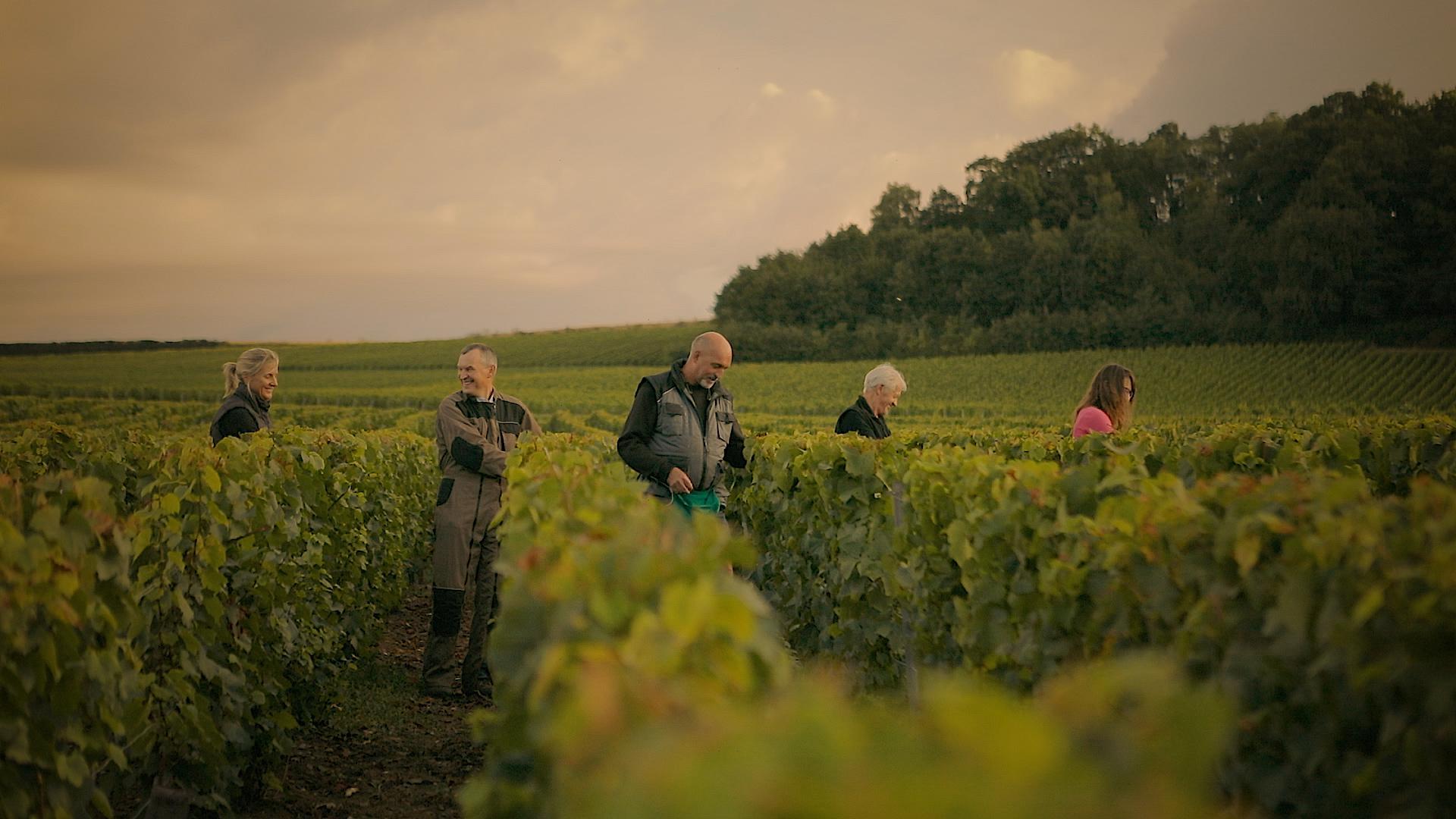I. Vine growing
Sustainable and modern cultural methods are used while respecting tradition, the terroir and especially the environment.
On the limestone hillside of Côte de Sézanne, where Chardonnay sculpts the landscape, our committed viticulture allows us to develop an enlightened range, marked by its terroir and by the high standards of those who contribute to it.
Sustainable and modern cultural methods are used while respecting tradition, the terroir and especially the environment.
During harvest time, grapes are handpicked, pressed and vinified according to grape variety, village of production and agricultural practice. This selection allows us to broaden the choice of “vins clairs” in preparation for the blending stage.
After the harvest, our Cellar Master, Gilles Baltazart goes on the vinification... In stainless steel tanks, oak vats or oak barrels, with or without malolactic fermentation, with natural or selected yeasts…
The fermentation of juices allows the conversion of sugars by yeasts into alcohol and CO2. This first fermentation takes place in thermoregulated stainless steel tanks or in oak barrels on certain cuvées. Thanks to its qualitative supply, Brun de Neuville rigorously selects special yeasts, an indispensable tool for fermentation, in order to obtain the desired aromatic development.
To preserve more freshness and authenticity in its reserve wines, Le Brun de Neuville selects, according to their profile, the “vins clairs” that will not undergo the malolactic fermentation. This practice guarantees excellent aging potential.
Damien Champy, President since 2008, Cyril DELANNOY, Cellar Master since 2023 and the team blend the upcoming cuvees by only using the first press wines for Le Brun de Neuville’s Champagnes.
The second transformation of sugar into alcohol and CO2 by the action of yeasts is carried out in the bottle. Carbon dioxide is thus trapped in it, creating effervescence. It is at this stage that our wine becomes Champagne.
Our champagnes mature on their lees in our cellars at 15 meters underground for a minimum of 4 years, in order to develop their aromas.
This ageing time extends to more than 10 to 12 years for our special cuvées, especially our "Autolyse".
The last stage of clarification of champagne is the riddling. Day after day, the bottles are rotated to concentrate the yeast particles in the bottle neck.
After disgorgement, low dosage in sugar are favored so that the natural characters of the wines are expressed.
In order to obtain optimum maturity, after disgorging, our champagnes return for at least six months to the cellar. The bottles are then labelled and shipped.


In order to visit our website, you must be of legal age to consume alcohol in your country of residence.
Continue Le Brun de Neuville